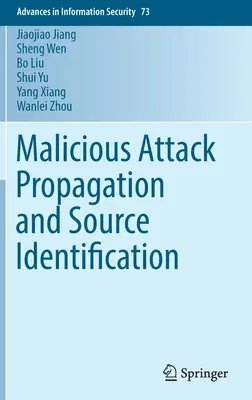This book covers and makes four major contributions: 1) analyzing and
surveying the pros and cons of current approaches for identifying rumor
sources on complex networks; 2) proposing a novel approach to identify
rumor sources in time-varying networks; 3) developing a fast approach to
identify multiple rumor sources; 4) proposing a community-based method
to overcome the scalability issue in this research area. These
contributions enable rumor source identification to be applied
effectively in real-world networks, and eventually diminish rumor
damages, which the authors rigorously illustrate in this book.
In the modern world, the ubiquity of networks has made us vulnerable to
various risks. For instance, viruses propagate throughout the Internet
and infect millions of computers. Misinformation spreads incredibly fast
in online social networks, such as Facebook and Twitter. Infectious
diseases, such as SARS, H1N1 or Ebola, have spread geographically and
killed hundreds of thousands people. In essence, all of these situations
can be modeled as a rumor spreading through a network, where the goal
is to find the source of the rumor so as to control and prevent network
risks. So far, extensive work has been done to develop new approaches to
effectively identify rumor sources. However, current approaches still
suffer from critical weaknesses. The most serious one is the complex
spatiotemporal diffusion process of rumors in time-varying networks,
which is the bottleneck of current approaches. The second problem lies
in the expensively computational complexity of identifying multiple
rumor sources. The third important issue is the huge scale of the
underlying networks, which makes it difficult to develop efficient
strategies to quickly and accurately identify rumor sources. These
weaknesses prevent rumor source identification from being applied in a
broader range of real-world applications. This book aims to analyze and
address these issues to make rumor source identification more effective
and applicable in the real world.
The authors propose a novel reverse dissemination strategy to narrow
down the scale of suspicious sources, which dramatically promotes the
efficiency of their method. The authors then develop a
Maximum-likelihood estimator, which can pin point the true source from
the suspects with high accuracy. For the scalability issue in rumor
source identification, the authors explore sensor techniques and develop
a community structure based method. Then the authors take the advantage
of the linear correlation between rumor spreading time and infection
distance, and develop a fast method to locate the rumor diffusion
source. Theoretical analysis proves the efficiency of the proposed
method, and the experiment results verify the significant advantages of
the proposed method in large-scale networks.
This book targets graduate and post-graduate students studying computer
science and networking. Researchers and professionals working in network
security, propagation models and other related topics, will also be
interested in this book.

